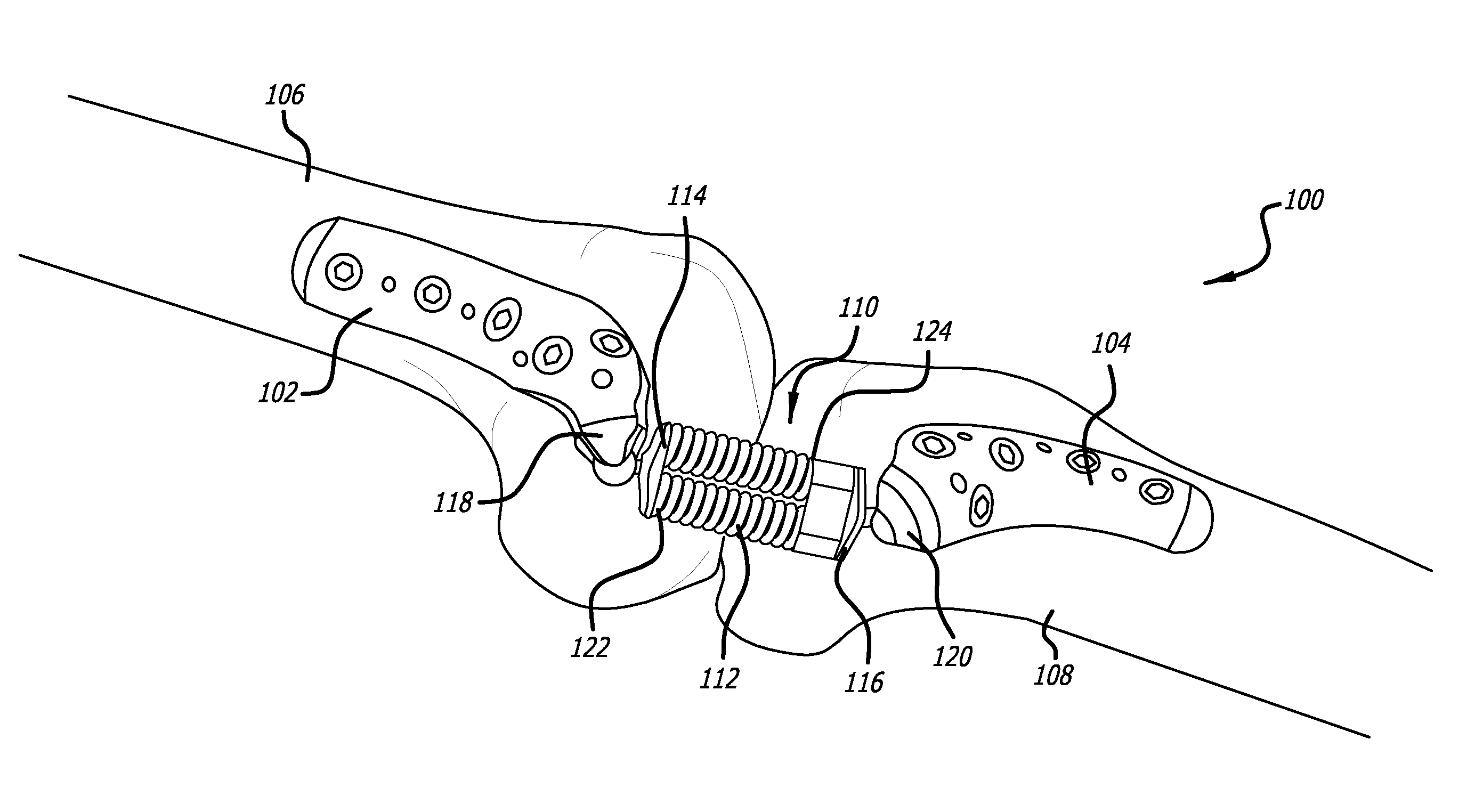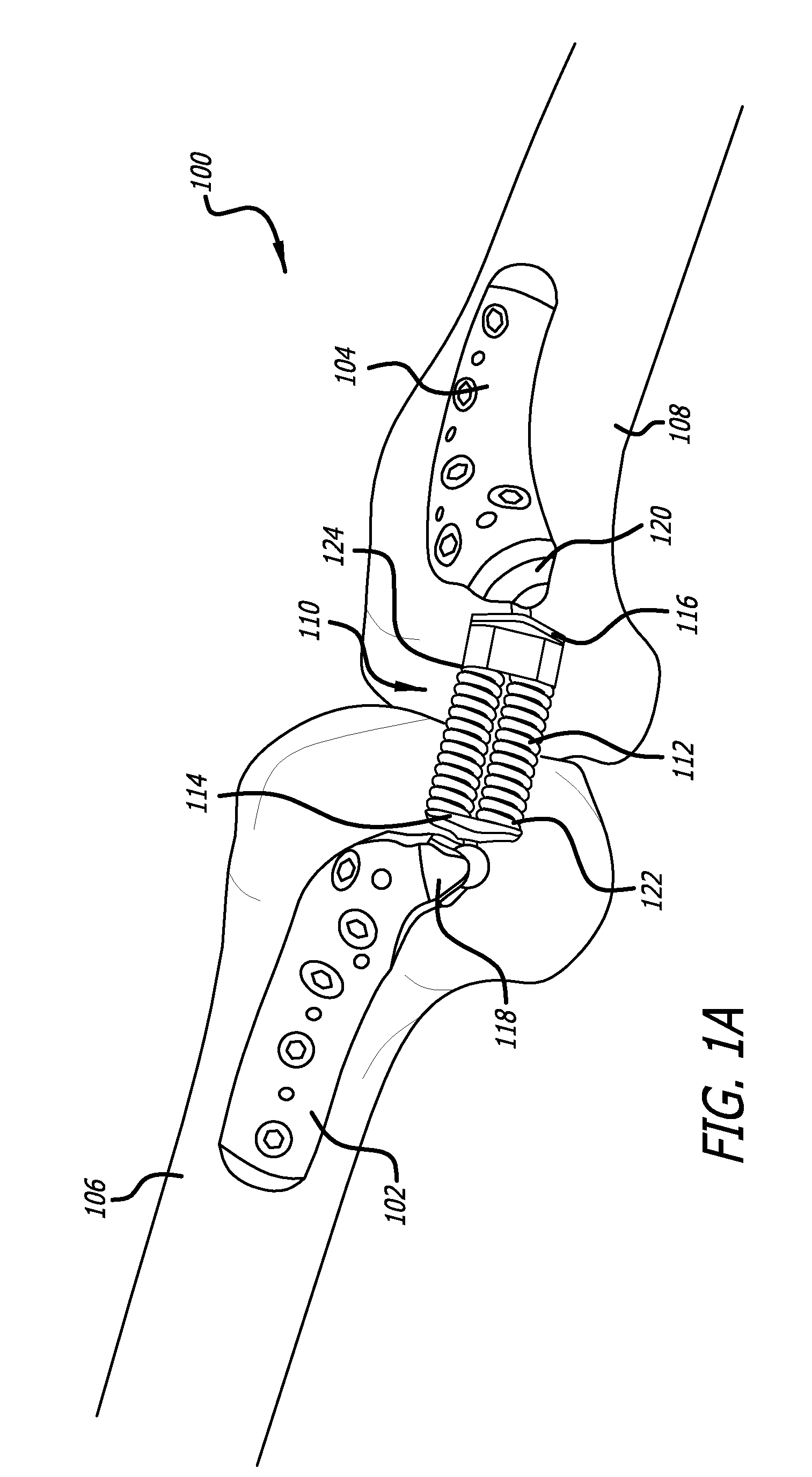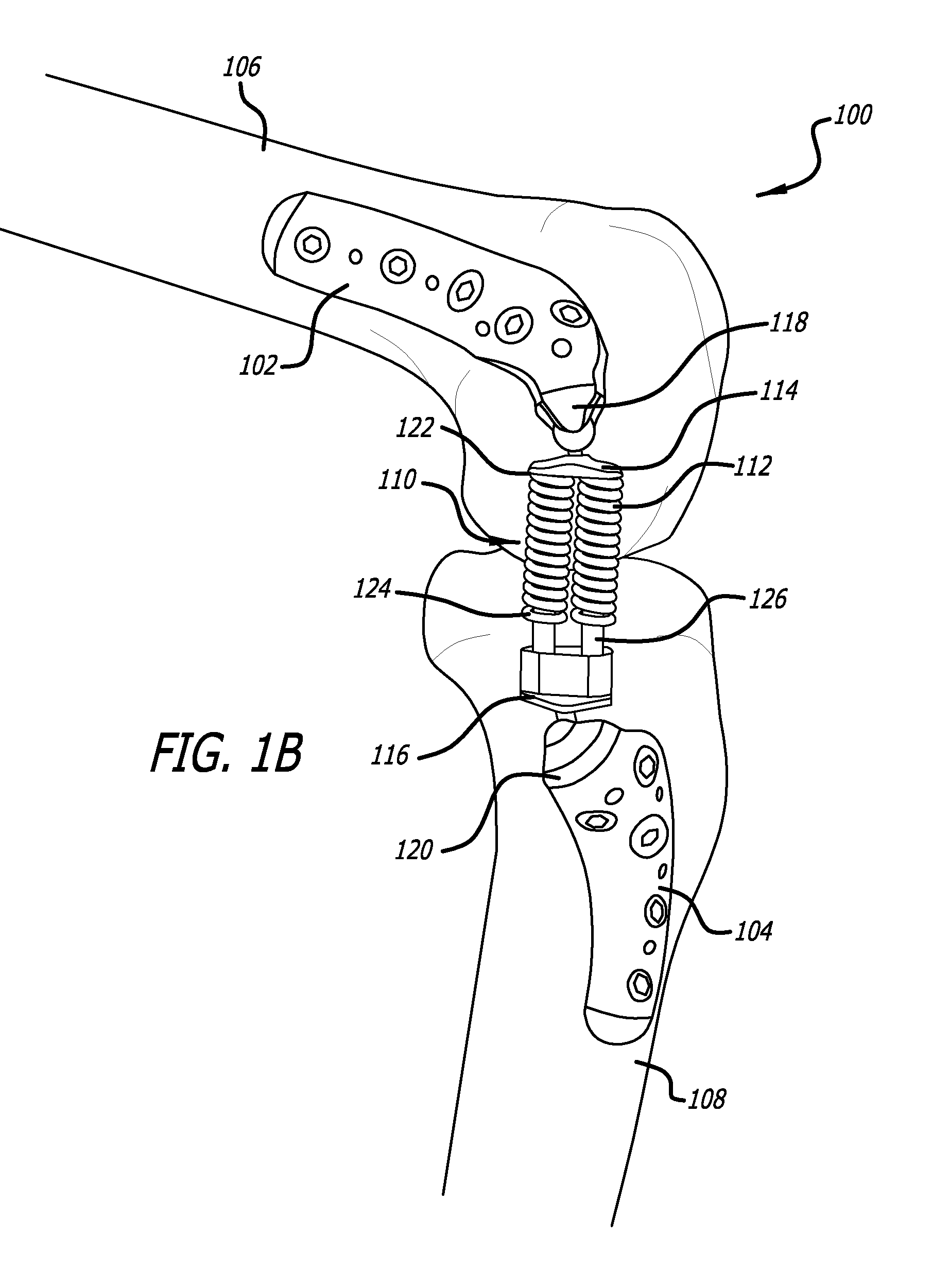Adjustable Absorber Designs For Implantable Device
a technology of absorber and absorber, which is applied in the field of orthopaedic surgery, can solve the problems of chondroprotective therapy, arthroplasty procedures are characterized by relatively long recovery time, and high invasive procedures, and achieve the effect of facilitating translation through the skin and preventing accidental unlocking and/or translation
- Summary
- Abstract
- Description
- Claims
- Application Information
AI Technical Summary
Benefits of technology
Problems solved by technology
Method used
Image
Examples
Embodiment Construction
[0102]Referring now to the drawings, which are provided by way of example and not limitation, the disclosed embodiments are directed towards apparatus and methods for treating the knee joint. However, these embodiments may also be used in treating other body joints, and to alleviate pain associated with the function of diseased or misaligned members forming a body joint without limiting the range of motion of the joint. The embodiments described below relate to apparatuses and methods for adjusting the amount of load an energy absorbing device can manipulate. Some embodiments include an energy absorbing device including a dual spring member and other embodiments include the use of a single spring member.
[0103]Certain of the embodiments include energy absorbing devices designed to minimize and complement the dampening effect and energy absorption provided by the anatomy of the body, such as that found at a body joint. It has been postulated that to minimize pain, load manipulation or...
PUM
 Login to View More
Login to View More Abstract
Description
Claims
Application Information
 Login to View More
Login to View More - R&D
- Intellectual Property
- Life Sciences
- Materials
- Tech Scout
- Unparalleled Data Quality
- Higher Quality Content
- 60% Fewer Hallucinations
Browse by: Latest US Patents, China's latest patents, Technical Efficacy Thesaurus, Application Domain, Technology Topic, Popular Technical Reports.
© 2025 PatSnap. All rights reserved.Legal|Privacy policy|Modern Slavery Act Transparency Statement|Sitemap|About US| Contact US: help@patsnap.com



